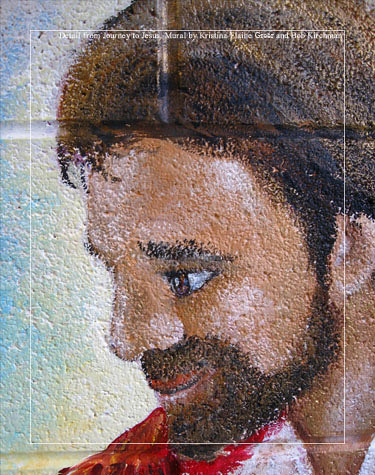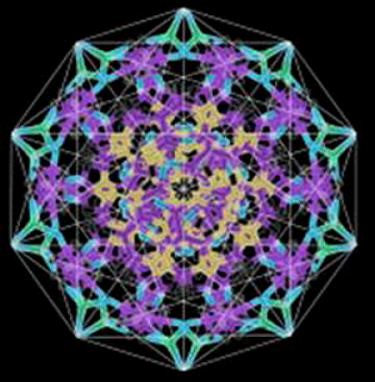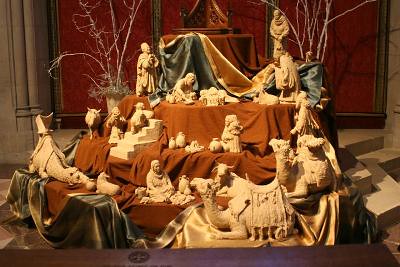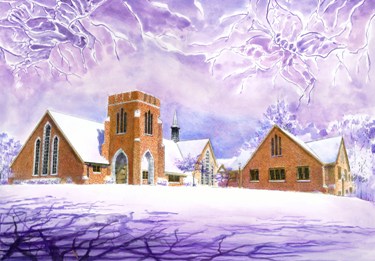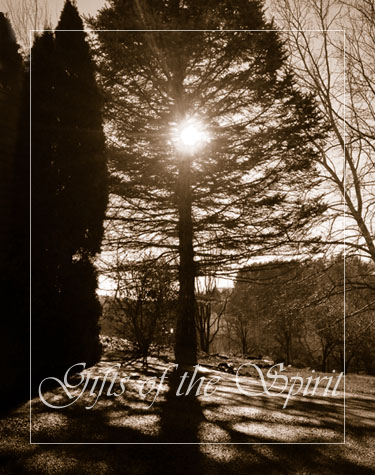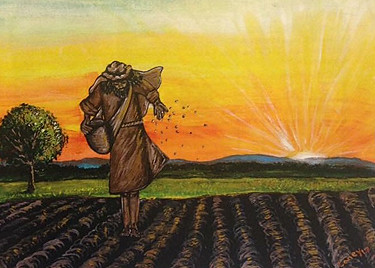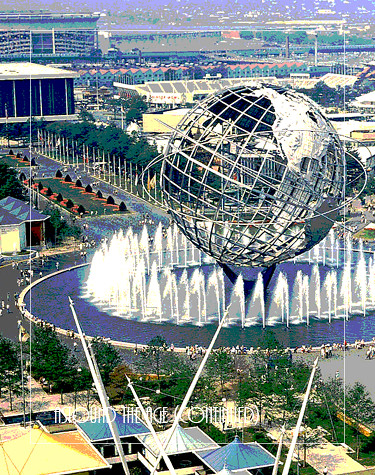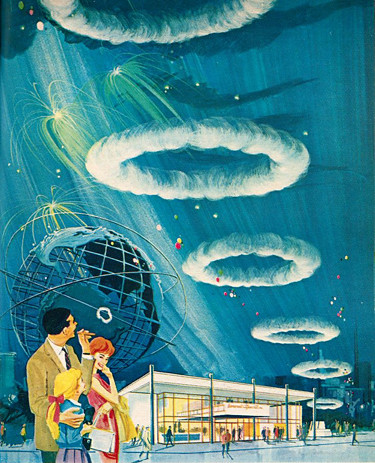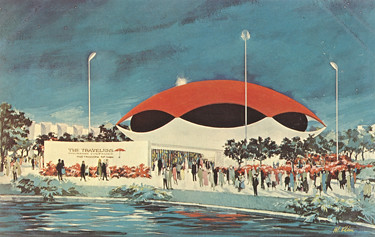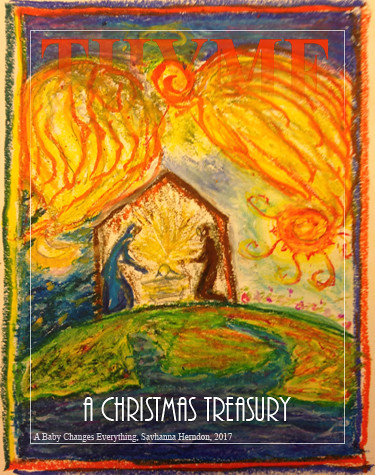
Volume XIII, Issue XXV
A Christmas Treasury
Here are presented some of our favorite Christmas features from all time, collected from past issues.
For Unto Us a Child is Born
Isaiah 9:6,7
Tchaikovsky's Nutcracker, Op. 71
A Beloved Christmas Story's Story
With Six Children to Feed, the Author Needed a Miracle
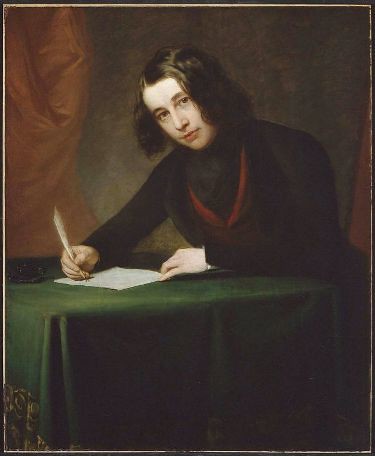
Frances Alexander's 1842 painting of the famous author.
The Year was 1843 and he needed a miracle. With six children to feed and a large house in London to maintain, his slipping sales as a writer were of great concern. His installment novel: Martin Chuzzlewit, was selling poorly, unlike earlier works like Nicholas Nickleby, which had given him some measure of success.
Christmas was coming as he bitterly confided to a friend that his checkbook was empty. Walking the streets, he came up with a 'Ghost of an Idea' and set to work. He published 6000 copies in time for Christmas distribution. They sold out, but because he had splurged on hand-coloured illustrations by John Leech he barely broke even. [1.] Yes, even in Nineteenth Century England, good illustration cost you something! [2.]
Fortunately the little work went on to be a classic. It reinvigorated the career of its creator. Today we still love A Christmas Carol and its author: Charles Dickens, not only as a writer, but as one who helped to bring about much needed social reforms in his day.
Stille Nacht, Heilige Nacht
Beloved Carol Inspired by a Broken Organ
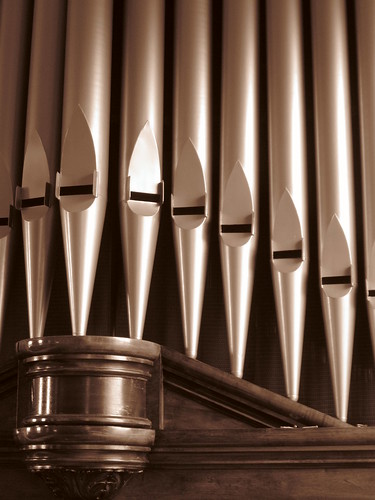
The pipes of the Trinity Lutheran Church organ in Crimora.
Lynn [click to read] brings us the wonderful story of how one of our most beloved carols came to be written:
In 1818, a roving band of actors was performing in towns throughout the Austrian Alps. On December 23 they arrived at Oberndorf, a village near Salzburg where they were to re-enact the story of Christ's birth in the small Church of St. Nicholas.
Unfortunately, the St. Nicholas' church organ wasn't working and would not be repaired before Christmas. Because the church organ was out of commission, the actors presented their Christmas drama in a private home. That Christmas presentation of the events in the first chapters of Matthew and Luke put assistant pastor Josef Mohr in a meditative mood. Instead of walking straight to his house that night, Mohr took a longer way home. The longer path took him up over a hill overlooking the village.
From that hilltop, Mohr looked down on the peaceful snow-covered village. Reveling in majestic silence of the wintry night, Mohr gazed down at the glowing Christmas-card like scene. His thoughts about the Christmas play he had just seen made him remember a poem he had written a couple of years before. That poem was about the night when angels announced the birth of the long-awaited Messiah to shepherds on a hillside.
Mohr decided those words might make a good carol for his congregation the following evening at their Christmas eve service. The one problem was that he didn't have any music to which that poem could be sung. So, the next day Mohr went to see the church organist, Franz Xaver Gruber. Gruber only had a few hours to come up with a melody which could be sung with a guitar. However, by that evening, Gruber had managed to compose a musical setting for the poem. It no longer mattered to Mohr and Gruber that their church organ was inoperable. They now had a Christmas carol that could be sung without that organ.
On Christmas Eve, the little Oberndorf congregation heard Gruber and Mohr sing their new composition to the accompaniment of Gruber's guitar.
Weeks later, well-known organ builder Karl Mauracher arrived in Oberndorf to fix the organ in St. Nicholas church. When Mauracher finished, he stepped back to let Gruber test the instrument. When Gruber sat down, his fingers began playing the simple melody he had written for Mohr's Christmas poem.
Deeply impressed, Mauracher took copies of the music and words of "Stille Nacht" back to his own Alpine village, Kapfing. There, two well-known families of singers — the Rainers and the Strassers — heard it. Captivated by "Silent Night," both groups put the new song into their Christmas season repertoire.
Stille Nacht, heilige Nacht,
Alles schläft; einsam wacht
Nur das traute hochheilige Paar.
Holder Knabe im lockigen Haar,
Schlaf in himmlischer Ruh!
English translation:
Silent night! holy night!
All is calm, all is bright,
'Round yon virgin mother and Child!
Holy Infant, so tender and mild,
Sleep in heavenly peace,
Sleep in heavenly peace.
The Strasser sisters spread the carol across northern Europe. In 1834, they performed "Silent Night" for King Frederick William IV of Prussia, and he then ordered his cathedral choir to sing it every Christmas eve.
Twenty years after "Silent Night" was written, the Rainers brought the song to the United States, singing it (in German) at the Alexander Hamilton Monument located outside New York City's Trinity Church.
In 1863, nearly fifty years after being first sung in German, "Silent Night" was translated into English (by either Jane Campbell or John Young). Eight years later, that English version made its way into print in Charles Hutchins' Sunday School Hymnal. Today the words of "Silent Night" are sung in more than 300 different languages around the world.
The English version we know today was written by the Episcopal priest John Freeman Young, however the standard English version contains just three verses, whereas the German version contains six. (only verses 1, 6 and 2 from the original Joseph Mohr version are sung in English).
The Story of 'Joy to the World'
A Beloved Hymn Written in Celebration of Advent
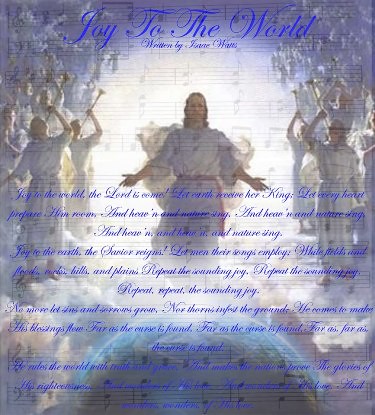
Graphic by Kristina Elaine Greer, who writes: "I overlaid the entire picture from photos I took of the music in the most recent United Methodist Hymnal. I simply clipped out the music part and compiled them together then cut and pasted them to the template and changed the opacity."
A Short History of 'Joy to the World'
by Kristina Elaine Greer
Most people think of the wonderful hymn, “Joy to the World,” as Christmas Hymn proclaiming the joy of Christ’s birth, but there is a different history behind this marvelous song. The original words to “Joy to the World” by English hymn writer Isaac Watts were based on Psalm 98 in the Bible. According to Wikipedia “the song was first published in 1719 in Watts' collection; The Psalms of David: Imitated in the language of the New Testament, and applied to the Christian state and worship.” Isaac Watts originally wrote the words of "Joy to the World" as a hymn glorifying Christ's triumphant return stated in the book of revelation, instead of as a song celebrating the birth of Jesus Christ. This song was meant more for Advent than Christmas and in some hymnals today you will find it in the holiday concordance of the hymnal under Advent instead of Christmas (which is correct). Interestingly, we only sing the second half of Watts' lyrics when we sing this beloved hymn. The music of this song was adapted and arranged to Watts' lyrics by Lowell Mason in 1839. The melody is said to have been from an older melody, which was then believed to have originated from Handel, partially because of the theme of the refrain (And heaven and nature sing...). This appears in the beloved orchestra opening and accompaniment of the “Comfort ye” from Handel's Messiah, the first four notes match the beginning of the choruses “Lift up your heads” and “Glory to G-d” from the same oratorio. Handel, however, did not compose the entire tune. In fact “Antioch” is the generally used name of the tune. As of the late 20th century, “Joy to the World” was the most-published Christmas hymn in North America. Today we still enjoy it during the holiday seasons of Advent and Christmas time no matter the history it reminds us to be joyful that we have a Savior, who came to earth as a baby, lived among us, died for us, was raised again victorious, and is our Lord who will come again in glorious acclamation.
Unpacking The Twelve Days of Christmas
You Will Never Look at this Song the Same Way Again

"Partridge."
I always assumed the song: "The Twelve Days of Christmas" to be a simple frivolous song of celebration. Not so!, this song is instructive in basic truths of the Christian Faith! Here is the explanation by Father Edward Dowling:
“The Twelve Days of Christmas” celebrates the official Christmas season which starts liturgically on Christmas Day and ends twelve days later on the Feast of the Epiphany. “My true love” refers to God, “me” is the individual Catholic. The “twelve lords a leaping” are the twelve basic beliefs of the Catholic Church as outlined in the Apostles Creed. The “eleven pipers piping” are the eleven Apostles who remained faithful after the treachery of Judas. The “ten ladies dancing” are the Ten Commandments. The “nine drummers drumming” are the nine choirs of angels which in those days of class distinction were thought important. The “eight maids a milking” are the Eight Beatitudes. The “seven swans a swimming” are the Seven Sacraments (or the Seven Gifts of the Holy Spirit) [click to read]. The “six geese a laying” are the Six Commandments of the Church or the six days of creation. The “five golden rings” are the first five books of the Old Testament called the Torah which are generally considered the most sacred and important of all the Old Testament. The “four calling birds” are the Four Gospels. The “three French hens” are the Three Persons in God or the three gifts of the Wise Men. The “two turtle doves” represent the two natures in Jesus: human and divine or the two Testaments, Old and New. The “partridge” is the piece de resistance, Jesus himself, and the “pear tree” is the Cross."
Here is More Historical Background [click to read] from Father Dowling. h/t Kristina Elaine Greer G-d bless you all during the Advent, Christmas, and Epiphany seasons!
Sherando Lake Island and Ice

The island in Sherando Lake. This photo is displayed in the Virginia Blood Services Waynesboro Facility.
Photo by Bob Kirchman
Photos from THYME and The Journey are available through The Kirchman Studio [click to read]. Please contact them directly if you are interested.

